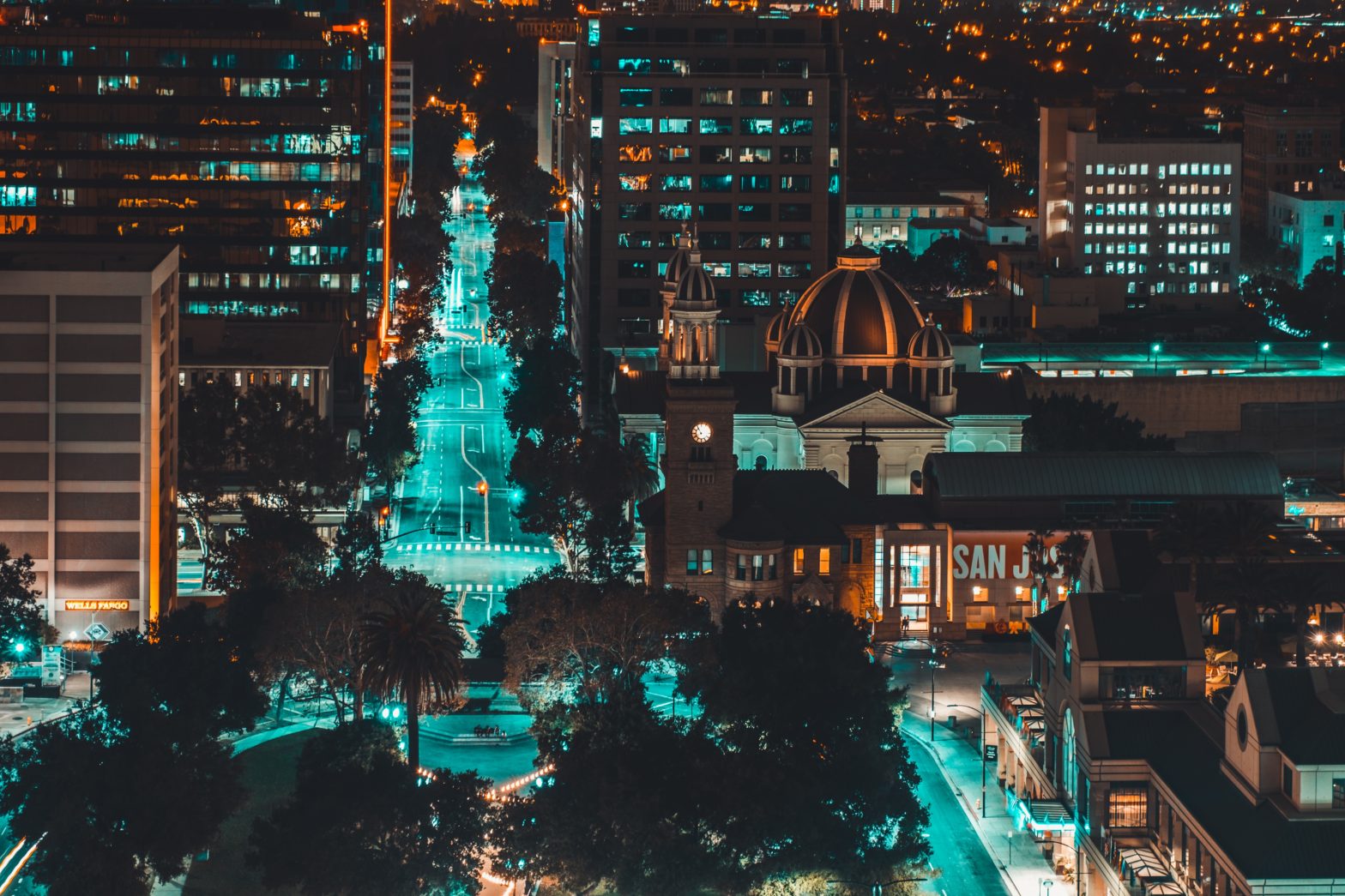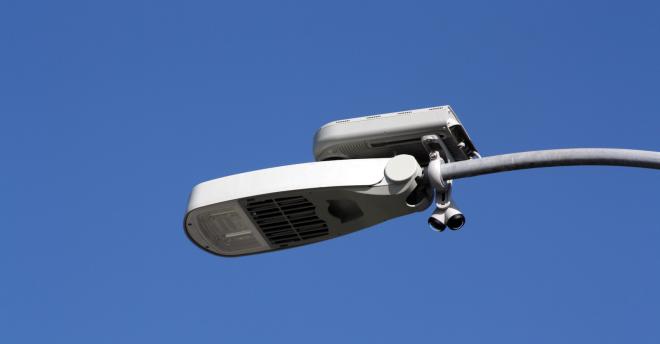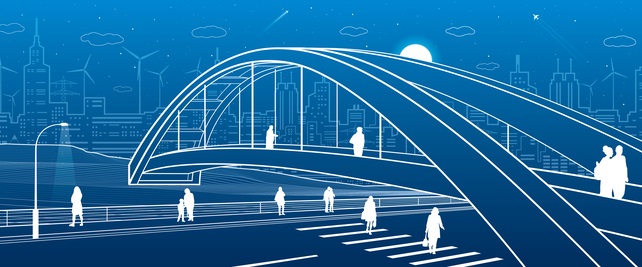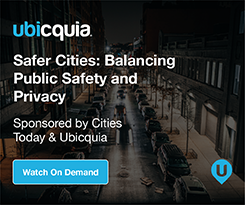
Photo: Landfillgirl | Dreamstime.com
A moment of opportunity for streetlight upgrades
23 August 2022
Sponsored by: Ubicquia
A new whitepaper reveals why now is the optimum time for cities to invest in infrastructure upgrades.
At a time when there is an urgent need to address the climate emergency and a global energy crisis, US cities are receiving unprecedented federal funding enabling them to invest in key technologies that are proving their worth.
Three streetlight-enabled applications in particular are helping cities meet their environmental goals: smart lighting controls, AI-driven traffic management, and air and noise pollution monitoring.
Public lighting accounts for up to 40 percent of a municipality’s electricity bill. With an energy usage reduction of up to 80 percent compared to high pressure sodium lights, switching to LEDs with smart controllers allows cities’ budgets to go much further so they can invest savings back into other priorities and projects.
Estimates suggest that a global switch to LEDs could save over 1,400 million tons of CO2 and avoid the construction of 1,250 power stations, with smart controllers offering additional benefits.
A growing number of cities are also deploying smart applications to maximize investment outcomes.
“We’re increasingly seeing multiple use cases across multiple budgets on the same platform,” said Herb Sih, Smart City Strategist and Advisor to Ubicquia. Ubicquia offers smart city solutions that plug into existing streetlights to provide services including advanced light control, and sensors to improve air quality, mobility, and public safety.
30 cities make the switch
Ubicquia partnered with RealTerm Energy, which specializes in LED streetlighting conversions for municipalities, on 30 smart streetlighting projects in the United States and Canada. By converting to LED lights and adding lighting controls, cities reduced energy consumption by 3,721,673 kWh annually – which is calculated to be the equivalent of taking 568 typical gasoline-powered vehicles off the road.
The town of Ogunquit, Maine, is one of the municipalities benefitting. The town reported that by changing to LED streetlights, instead of paying Central Maine Power $75,000 annually, the cost to taxpayers will be less than $12,000. In addition to the cost savings, the environmental benefits through reduced energy usage are estimated to cut the town’s carbon footprint by 139 tons annually. The change will also give control over the light fixtures including brightness and maintenance.
The program is an example of how LED streetlight conversions save cities money and energy and reduce greenhouse gas emissions, and how combining this with an easy-to-install platform makes smart city services accessible for local governments of all sizes.
A platform of potential
For cities that want to get more from existing LED lights, plug-and-play systems such as Ubicquia’s mean new applications can be deployed “in literally minutes”.
Traffic management is a key priority for local governments. Sensors on streetlights and artificial intelligence (AI) analytics provide real-time data to help cities optimize routes, boost safety, allocate road resources, and improve parking.
A study from consulting group Juniper Research found that smart traffic management systems could save cities $277 billion by 2025 through reducing emissions and congestion. Such systems could also reduce the amount of time each motorist spends in traffic by 33 hours per year.
The City of West Hollywood in California, for example, has deployed Ubicquia’s UbiHub integrated smart city platform on its streetlights to benefit from the traffic and curb management capabilities.
“Intelligent data on traffic, bicycle, and pedestrian management supports public safety measures and our future planning development needs for our residents and visitors,” said Jackie Rocco, City of West Hollywood’s Deputy City Manager.
Cities also have a growing focus on managing air and noise pollution, as both are associated with negative health outcomes. It’s commonly said that you can’t manage what you don’t measure and because of their ubiquity, streetlights provide an ideal way to monitor and address these issues via sensors. This includes the ability to continuously measure noise levels and pollutants such as CO, NOx, SO2, O3, NO2, PM1, PM2.5 and PM10, as well as other environmental factors such as heat and humidity.
Funding
Federal aid from the American Rescue Plan Act (ARPA) and the Infrastructure Investment and Jobs Act (IIJA) is now enabling many cities to make infrastructure upgrades that have long been in their sights.
In terms of streetlighting: “It makes good financial and practical sense to add controllers at the same time as replacing streetlights,” said Sih. This avoids duplication of labor and resources.
Smart streetlighting projects with lighting controls are strong candidates for federal funds, he added.
To access some of the pots of the IIJA money, cities will have to participate in a competitive bid process.
“If you can show how you’re going to use the funds, and show the impact the initiative will have, you’re going to be in a much stronger position to compete,” Sih commented.
Full details are forthcoming but the climate and clean energy provisions in the newly passed Inflation Reduction Act highlight the urgent need for action and will further help local governments meet greenhouse gas emissions reduction goals.
There are many other funding options that cities can explore for streetlighting upgrades too, including energy performance contracts (EPCs), local bank funding, municipal bonds, tax-exempt lease purchase (TELP) structures, public-private partnerships and infrastructure-as-a-service models. Because of the long-term benefits, many cities also self-fund the projects using existing operations and maintenance or capital budgets.
Smart streetlights “pay for themselves,” Sih says, with cities beginning to see the return on investment almost immediately.








